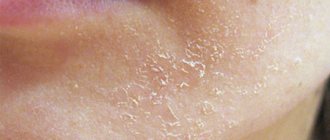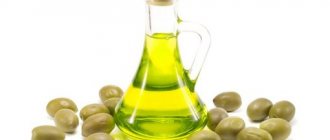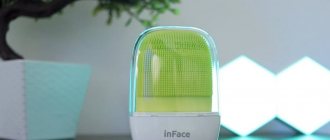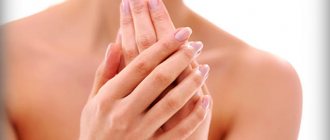Recipes for making foam for washing your face with your own hands
The most convenient and affordable option is washing your face with foam, which retains skin moisture for a long time and removes not only excess fat, but also
clogged pores. You can store it for no more than 3 days in the refrigerator using a tightly closed glass container.
There are several recipes for cleanser from which you can choose something “your own” .
Preparing foam for washing at home always requires a soap base. Which can be bought at any store. If you don’t have such an ingredient, you can use high-quality baby soap. First you need to grate it and then melt it in a water bath using a heat-resistant bowl.
Recipe for making foam for washing a normal face type: mix 50 grams of soap base, a teaspoon of homemade honey and a tablespoon of almond oil with 4 tbsp. spoons of water, vitamin E (in ampoules) and wheat oil. Whisk everything well, let cool to room temperature and apply with massage movements to the skin of the face, and when finished, rinse with water.
Recipe for making foam for washing oily faces: 50 grams of soap base, 2 tbsp. Mix tablespoons of water and grape oil with 5 drops of tea oil. If desired, you can add 1 tbsp. a spoonful of grape seed oil. After whipping all the ingredients into a thick mass, cool the prepared cleanser, apply to the skin and rinse with warm water.
Preparing foam for all skin types: melt 50 grams of soap base and combine it with 50 ml of slightly warmed milk. Then add a teaspoon of honey (or 1 yolk), the same amount of vitamin E, a tablespoon of base oil and a few drops of grape seed oil, equally with flaxseed, burdock and olive oil. Mix everything thoroughly, or better yet, beat until foamy (5-7 minutes will be enough). Then place the foam in a sterile container, cover with an airtight lid and let it brew for about 35 minutes. Be sure to cleanse your skin before applying. This recipe can be used even for the décolleté and neck area. When finished, rinse off the foam with clean water.
Honey gel for washing
To prepare, you will need half a glass of honey and pharmaceutical glycerin, a tablespoon of liquid soap (preferably baby soap), 10 drops of your favorite essential oil.
Mix honey and glycerin, add liquid soap and essential oils. After thorough mixing, the wash is ready.
You can freeze part of the homemade gel in portions - in the form of ice cubes, and take it out shortly before washing your face so that the ice melts.
If you want the product to foam, add a spoonful of soap base to it (you can just use baby liquid soap).
To obtain a gel-like texture, add gel granules or gel preservative (purchased at natural soap supply stores). But natural washes themselves are so good that they do not need any additions - they already work effectively.
Gels, foams and other store-bought washing products cleanse the skin well, providing additional care. However, they may contain hazardous substances that prolong the shelf life of the product being sold and promote good foaming. For this reason, it is best to prepare your own face wash from natural products.
. Remember that a nourishing and moisturizing cleanser should be applied to cleansed skin.
DIY face wash toner
To effectively remove remnants of decorative cosmetics, dust, sebaceous plugs and particles of dead epithelium, a tonic is suitable. It is also able to smooth out the skin in a short time, remove redness, quickly relieve fatigue, narrow pores and restore acid-base balance and PH balance. It is recommended to use tonic after washing with foam. Should be stored in the refrigerator for no more than 2 days.
DIY tonic recipes:
- Tonic for dry skin: mix a glass of boiled (cold) milk with finely grated cucumber pulp and cook over low heat. After boiling, you can remove it from the stove only after 5 minutes. When finished, cool and strain the prepared mixture.
- Strawberry tonic for oily face: mash fresh wild strawberries and pour a glass of vodka. Next, transfer the mixture to a tightly closed glass container and let it brew for a month. At the end of the period, strain and dilute with boiled warm water in equal quantities.
- Grape tonic for normal skin: mash 25-30 green grapes with a fork along with the skin and let it brew for a couple of hours. Then you need to squeeze the juice out of them and mix it with a teaspoon of fresh honey and a pinch of table salt. Let the mixture sit for another 1 hour, after which you can start using it.
- Tonic from rose leaves for normal skin type: pour 2 cups of leaves of bright varieties of roses (except yellow) with an equal amount of filtered water and simmer over low heat until the petals discolor. Then the broth should be cooled and strained.
- Herbal tonic against various inflammatory processes for normal skin type: pour crushed dry herbs of mint, chamomile and calendula in equal proportions (about a tablespoon) with a glass of boiling water and leave in a sealed container for about an hour. The mixture should be strained before use.
Washing your face with oil
Facial cleansing oil is an excellent cleansing and care option that has several benefits:
- Firstly, the oil is prepared only from natural ingredients and is suitable for all skin types, which makes it possible for all family members to use it;
- Secondly, this cleanser not only cleanses the skin, but also protects it from external influences, and also removes acne and various inflammations.
So, first you need to prepare a basic oil mixture, for the preparation of which you will need olive and castor oil.
For oily skin, the ratio should be as follows: half a teaspoon of castor oil to 2 tablespoons of olive oil. For normal skin, olive oil should be 5 times less than castor oil, and for dry skin - no more than 10% castor oil.
To wash oily skin types, it is recommended to add tea tree or grape seed oils.
For all types, only almond oil and jojoba oil are suitable.
For excessively dry and lacking tone skin, it is recommended to use avocado or apricot kernel oils. Essential oils you can use are orange, chamomile or rose oils.
Rosemary essential oil is suitable for tightening pores and relieving inflammation.
And remember that all oils used for application to the skin must be unrefined.
After preparation, it is necessary to prepare the skin of the face, namely, to help the pores open. To do this, dip a soft cloth in hot water and place it on your face, leaving it until it cools completely. Now you can start applying the mixture of oils: you need to apply them with soft massage movements, lightly massaging your face for several minutes. Then take another napkin dipped in hot water and gently wipe your face with it.
This procedure should be carried out before bedtime, no more than 2 times a week.
Washing with milk
Even in ancient times, milk was considered the elixir of youth and beauty. It contains a huge amount of nutrients that have a beneficial effect on the skin. For example, lactic acid and milk sugar are good moisturizers. Proteins and milk fats will help increase firmness and elasticity, and milk protein regulates the water balance of the skin.
Milk is an excellent remedy for wrinkles and the first signs of aging, since the vitamin E and lactic enzymes it contains renew epidermal cells. If you have dry skin, feel free to wash your face with milk. It will not only moisturize it, but also calm it down.
First, wipe your face with a cotton swab dipped in whole milk and then diluted with water (1:1). After cleansing, apply some cream, it’s good if it matches your skin type.
Instead of water, you can use raspberry, linden or chamomile decoction for dilution, which will dry out inflammation and eliminate peeling of the skin. But you can use such a cleanser only when there are no pustules or wounds on your face.
Making your own face wash lotions
Lotion for oily skin: peel 1 orange, chop the pulp and mix it with 2 teaspoons of liquid honey and 1 spoon of glycerin. Now leave it to sit for a day, after which you can apply the finished lotion to the skin.
Lotion for normal skin: 1 tbsp. Pour a spoonful of dry mint leaves into a glass of boiling water and simmer over low heat for about 6-9 minutes. When the infusion has cooled, strain it and add a tablespoon each of lemon juice, cognac and calendula alcohol tincture.
Other homemade cleansers
Yolk cleanser: beat 1 yolk, gradually adding a tablespoon of lemon juice and refined sunflower oil. Finally, add two drops of peppermint oil and mix everything together. The resulting cleanser can be applied not only to the face, but also to the neck. After 5 minutes, the mixture should be rinsed with cool water and gently blot the skin with a soft cloth.
Infusion of crushed rose petals for sensitive skin: 2 tbsp. Pour a glass of boiling water over spoons of petals. Then wrap it in a towel and let it brew for half an hour. Then the broth should be cooled and strained through gauze. This cleanser perfectly tones and refreshes the skin, making it softer and smoother.
For dry skin types there are several options:
- Infusion of dry chamomile inflorescences: 200 grams of inflorescences are poured with a liter of boiling water. Cover with a lid and let it brew for a while. Then the infusion needs to be cooled and strained. This procedure not only tones the skin, but also smoothes out wrinkles over time.
- To soften dry skin: 4-5 sprigs of parsley, 2 tbsp. Grind tablespoons of dried chamomile flowers and the same amount of calendula in a mortar. Boil 200 ml of homemade milk, add a mixture of herbs and, lowering the heat, simmer the milk for half an hour, without bringing it to a boil. When finished, leave to infuse for several hours. Then strain and add the last ingredient - a teaspoon of honey.
**************************************** ************************* Don’t forget to share the information you read on social networks. You can help people who will find this information useful.
Benefits of Using Natural Face Wash
What is the first thing you use in the morning and the first thing you use after you finish your day? Right! Your cleanser is the most important part of your facial routine because it is the first thing that touches your face.
Finding balance is the key to success
Finding the right natural facial cleanser for your daily routine is something of a puzzle. If your face wash isn't strong enough, it won't give you a deep enough cleanse, leaving buildup on top of your skin and the rest of your products won't absorb properly.
A cleanser that is too strong for your skin can strip you of its natural oils, compromising your acid mantle, which can increase sensitivity and lead to the appearance of premature aging. Since everyone's skin is different, there is no one-size-fits-all answer, but finding an organic cleanser that is perfect for your skin will make all the difference to your skin.
Sometimes we see that a natural cleanser just doesn't clean enough or doesn't completely remove makeup. If you feel like your natural cleanser isn't doing enough to cleanse, we suggest working with physical accessories to achieve that goal rather than a plethora of synthetic facial cleansers.
Using a face brush or loofah will help you get the deep clean you're looking for, and if you find it difficult to remove makeup with regular washing, it may be helpful to start with a light oil or extra facial cleanser on a cotton pad to remove makeup first.
Do-it-yourself skincare products for washing your face
Did you know that you can cleanse your skin yourself using more than just water, soap and store-bought toner? At home, you can prepare many mixtures and solutions for washing, which will be completely natural and will bring much more benefits to the skin than ordinary water. Cleansing with such means was popular in ancient times; it was considered one of the most important conditions for preserving youth, and not at all by chance. Washing with natural products:
- enriches the epidermis layer with vitamins and minerals necessary to maintain normal metabolism, and, consequently, normal regeneration and blood circulation;
- can solve the problem of dry or too oily skin. The main thing is to choose the right components for the future mixture;
- eliminates a network of small wrinkles.
Of course, preparing a mixture or solution for cleansing takes much longer than just washing your face with tap water. But the results will be worth it: with constant use of folk remedies, you will soon notice significant improvements in the condition of your facial skin.
Wash your face twice a day
How many times a day should you wash your face? How to wash your face in the morning and evening?
We often think that rinsing our face with water in the morning is enough, but in the evening we need to wash our face with a cleanser. This is wrong. Cells do not “go to bed” at night. They continue to die and peel off as during the day (just imagine - that's 30,000 cells per minute). And just like during the day, they mix with sebum and sweat. And also night creams and serums.
Proper gentle cleansing with a cleanser 2 times a day (morning and evening) is the best option for healthy skin.
The more often you wash your face (with cleansers or just water), the more you damage the epidermal barrier and acid mantle of the skin. This leads to dryness and dehydration. The skin responds by producing more oil, resulting in a vicious circle. Therefore, there is no need to be too zealous, stick to the “golden mean”.
At the same time, if you sweat a lot, for example, during an intense workout, then, of course, the skin requires additional cleansing. The best option in this case is micellar water and tonic. “Micellar water” will delicately remove sweat and fat, and the tonic will cleanse the skin of traces of surfactants and balance the skin’s pH.
Washing with oatmeal
The method is suitable for those with oily skin prone to inflammation. Helps to even out the skin over time, restore its glow and freshness, smoothness, and remove blackheads.
It is possible that some rashes may appear on your face, but you should not be alarmed: this will free the skin from accumulated dirt. This will pass quickly, and after a while you will notice that her condition has noticeably improved: fine wrinkles have smoothed out, elasticity and freshness have returned.
The easiest way . Hold a handful of oatmeal (you can use whole or ground) in your hand and put it under running water for 1 minute. Then carefully apply the “cake” to your face and massage. After a couple of seconds, the rolled oats will begin to lather and cleanse the skin. The procedure is carried out for 2 minutes, then you can wash the mixture off your face.
In the evening procedure, you can add cane sugar to the oatmeal - you will get a wonderful scrub.
You can also use the following recipes:
- Grind the oatmeal and add any of the additives to it: seaweed, tangerine zest, bran (also grind everything first). The composition can be used not only for washing the face, but also as a body scrub, especially when visiting the sauna.
- Grind 2-3 tbsp in a blender. l. cereal and pour in heavy cream. Beat everything until you get a homogeneous paste-like mass. It can also be used on the décolleté and chest area.
You can use rolled oats instead of facial foam every day.
Are you interested in this method of washing? Then you simply must get to know him better! In one of the previous articles, we described in detail how to wash your face with oatmeal, selected video instructions, and collected as many recipes for cleansing compositions based on the miracle ingredient.
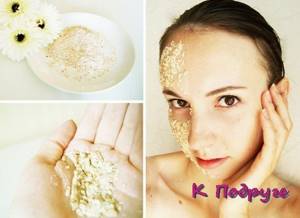
Wash for problem skin. Natural Recipes
Recipe 1. Washing with olive oil
It is carried out in this way: A small amount of oil is applied to the skin, massaged lightly, then left for a few minutes. Afterwards, apply a hot towel to the skin and hold until it cools down. At the end of the procedure, the face is cleansed of oil.
Recipe 2. Skin prone to rashes, especially if it is oily, can be cleansed well with baking soda.
which, in addition, also gently cleanses, exfoliating dead particles. To wash your face with soda for problem skin, do this: dilute soda in a small container with warm water, apply to moisturized facial skin and massage for about a minute. After this, they wash their face with cold water and do not wipe it; instead, pat the skin with their fingers until it dries.
Recipe 3. You can reduce oiliness and inflammation of the skin by using kefir
or whey
.
Apply these products to the skin using a cotton pad for 10 minutes, then wash with cool water.
Recipe 4. Oatmeal wash
Suitable for any skin type. It is especially useful for oily, sensitive, acne-prone skin. An oatmeal cleanser is prepared as follows: oatmeal is ground in a blender or coffee grinder to form flour, then diluted with water to form a thick paste. Soak a cotton pad in it and wipe the skin, trying to do this along the massage lines.
Recipe 5. For oily skin prone to acne, washing with chamomile decoction is useful. Prepare the remedy in the evening. To do this, take about 2 tablespoons of dried flowers per 500 ml of water, infuse and filter.
Recipe 6. A decoction of celandine is prepared in approximately the same way, only the concentration should be half as much. Celandine is best for fighting acne.
Recipe 7. “Washing” with ice cubes
. It can be prepared using simple purified water or a decoction of chamomile, string or sage. Natural green tea is also frozen, which also perfectly eliminates inflammation. In the morning, wipe the skin with ice, thereby saturating it with moisture and toning it. This procedure helps get rid of skin inflammation, tighten pores and clean them.
Ice instead of soap
Ice cubes will help restore your skin's toned, cheerful appearance, tone and refresh it. You can use either regular frozen water or herbal decoctions. The latter, of course, are preferable, since they will have a healing effect.
You need to wash your face according to the following rules:
- Don't force yourself to endure discomfort if your skin doesn't like the ice. To begin, introduce an evening routine and observe how your face reacts. If everything is fine, then you can add ice in the morning.
- The entire procedure should last no more than 45 seconds. And it should take no more than an ice cube. Otherwise, there is a risk of overcooling the skin and causing serious harm to it.
- Movements should be soft and gentle, no need to linger in one place.
- If you have oily or normal skin, you can wash your face daily. For dry skin, use ice no more than 5 times a week. If the skin is thin and sensitive, then such cleansing is contraindicated.
- You need to wipe your face strictly along the massage lines. Do not wipe, let it dry on its own. Afterwards apply nourishing cream.
Cosmetic ice recipes:
- Pour 1 tsp. sage herbs 1 tbsp. boiling water, leave for half an hour, strain and pour into molds. Helps with oily, porous skin.
- For 1 tbsp. boiling water – 1 tbsp. chopped mint leaves. Cooking as in recipe No. 1. Tightens pores, tones.
- Remove the zest from the tangerine and orange, pour in 2 tbsp. boiling water, leave for a day, strain and pour into molds. Helps tired skin.
- Pour a bunch of parsley into 2 tbsp. boiling water, leave for 10 minutes, strain and pour into molds. Whitens, relieves swelling.
Find even more recipes for cleansing cubes in the article - How to make cosmetic ice.
Washing the body and face using oatmeal
- You will need to grind the oatmeal in a coffee grinder. You must choose the degree of grinding individually for yourself. But the consistency of flour will not work.
- Take a clean nylon sock or a regular bag, pour the flakes into it and tie it so that it does not fall apart.
- Soak the bag in water. It will need to be used instead of soap. Just take it and wash your face and body with a damp bag. You just need to constantly moisten it with plenty of water.
- After this procedure, you should wash your face either with just water or a decoction of herbs. Can be used every day.
Topic tip: I recommend
Hydrophilic oil for washing
Another means of high-quality skin cleansing is hydrophilic oil. Transforming into a light emulsion upon contact with water, it literally sweeps dirt out of the pores. Suitable for any type of epidermis, washes off even waterproof cosmetics. You can prepare hydrophilic oil with your own hands. The main thing is to find polysorbate (it is responsible for turning the oil into an emulsion). This component is usually sold in soap departments.
The most common home recipe: grape seed oil - 30% (6 tbsp), hazelnut oil - 20% (4 tbsp), sweet almond oil - 25% (5 tbsp), jojoba oil – 10% (2 tbsp), wheat germ oil – 5% (1 tbsp), polysorbate 80 – 10% (2 tbsp). Mix all ingredients and pour into a glass bottle.
Natural decoctions and lotions
Herbs can be purchased at the pharmacy. If you live outside the city, you can stock up on the necessary ingredients yourself. Just remember that the “harvest” needs to be collected at the end of June - beginning of July, it is at this time that they contain the maximum of vitamins and nutrients.
Lettuce lotion
Wash the lettuce leaves and finely chop or cut them. Pour approximately 150 g of raw material into 250 ml of water heated to 50-60 degrees. Then let it sit for an hour without covering the container with a lid (otherwise the leaves will swell excessively and the infusion will turn into mush). After an hour, strain and wipe your face with the resulting lotion using massaging movements for 4-5 minutes, generously moistening a cotton swab. This product will significantly improve your complexion, the result will be noticeable almost after the first use.
Plantain leaf lotion
Finely chop the leaves, and then 2 tbsp. l. crushed raw materials, pour 100 ml of warm water. Let it brew for three hours. Wipe your face daily with a cotton swab. This product is successfully used for dry and dehydrated skin.
A decoction of coltsfoot and yarrow leaves
The product is used for acne and various inflammatory processes on the face.
To prepare the decoction, you need to take 4 medium-sized coltsfoot leaves and 3 small yarrow inflorescences. Wash the herbs and place them in a saucepan, and then add a liter of water. Bring to a boil and immediately remove from heat.
You need to wash your face with the decoction every day (preferably at night). The product must be completely absorbed into the skin; do not use a towel. You can go to bed without lubricating your face with anything.
Rose petal lotion
Grind a handful of rose petals, add warm water and let it brew for 2 hours. Wipe your face with the resulting solution morning and evening. This water will make the skin velvety and smooth, however, the result will not be noticeable the first time, but at least after a week of daily use.
My mother washes her face with laundry soap. She is allergic to perfumes and all fragrances. I also had skin problems due to water. It was oily, but at the same time it was flaky. This is a nightmare that no amount of powder can hide, because the flakes of the skin stuck out from under the powder or foundation (this was even more noticeable with it) and the result was even worse. Then I bought an aquadisc to treat drinking water. I tried washing my face with this water. The result is obvious. The water becomes softer. It was good for the skin. My friend washes herself with melt water. I like it too.
An excellent alternative for those who are not lazy. And I'm lazy. That’s why I prefer to buy facial washes. Thanks for the great tips!
I haven't washed my face with soap for a long time. I used to buy oatmeal and ice from decoctions, but now I make it myself. I take hyaluronic acid in 150 mg capsules. I buy rich cream, and in the evening I can spread it with baby cream or vitamin E.
I take vitamin and mineral complexes to keep my skin and hair healthy. In addition to washing my face, I use Intimo Sano makeup remover wipes. They perfectly cleanse the skin of makeup and take care of the face thanks to hyaluronic acid.
Doctor's column: washing lessons
Inna Shirin
The “Doctor’s Column” on Buro 24/7 is led by experts from the Rosh Medical Center, Lyubov Andreevna Khachaturyan, Doctor of Medical Sciences of the International Academy of Sciences, dermatovenerologist, cosmetologist, therapist and specialist in invasive techniques, and Inna Shirin, researcher at the Department of Dermatology of the Russian Medical Academy of Postgraduate Education and dermatovenerologist. In this article, experts will tell you how to wash your face properly.
With this material we begin a new series of articles dedicated to self-care at home. Personally, I am deeply convinced that 50% of how the skin looks depends on proper home care. But, unfortunately, today few people do this as needed. In recent years, a huge number of all kinds of cleansing foams, gels, oils, cosmetic solvents, etc. have appeared. Each of you probably has several of these products on your bathroom shelf. My advice, as a practicing dermatologist, is to throw them all out as soon as possible.
Under the influence of advertising, we have moved from simple and useful ways of caring for ourselves to much more complex and very harmful ones. Don't believe what it says on all those pretty jars. No matter how specially designed they are for your skin, as manufacturers claim, they cause harm, causing skin irritation, dryness, allergies, and so on.
Why? You can read the answer on the label, where the composition is written. Almost all modern cosmetics for washing consist of harmful chemicals. For example, surfactants - surfactants - are widely used as emulsifiers necessary for the production of a gel base. Yes, they perfectly wash away oil and dirt from the skin. But they also easily dissolve all fats. Remember the advertisement for some dishwashing detergent that breaks down tons of fat. Now imagine that you wash your face with the same product, only bottled in a different, more attractive package. Surfactants dry the skin and cause dermatitis and eczema.
Another example: SLS, aka sodium lauryl sulfate. This is a cleanser made from coconut oil. It is included in many “washes”. This substance is also used to degrease parts in factories and wash floors in workshops.
But our skin cannot do without daily washing. It constantly interacts with air filled with various dirty particles, we regularly touch our face with dirty hands, the skin sweats, and dead particles of the stratum corneum accumulate on it. This whole terrible mixture creates an environment for bacteria to multiply. Naturally, it needs to be washed off regularly. But not with chemicals, but with the most ordinary soap, preferably for children, which contains the least amount of various impurities and fragrances.

Interacting with sebum, the soap foams beautifully and removes all the dirt accumulated overnight during sleep or during the day on the street, and prevents the growth of pathogenic microorganisms. One caveat here is that sometimes you have skin that is sensitive to soap. In this case, I recommend using water with almond or wheat bran, as well as cucumber or lemon infusion for washing. You will find the recipes below.
Many of you now probably have a reasonable question: what about decorative cosmetics, for which all these cosmetic solvents are bought? Firstly, such removers are relatives of paint solvents, which are used in repair and finishing work. Their use is generally contraindicated; they can cause severe irritation. Secondly, I am categorically against the use of various foundations. Any skin can be brought to such a state that you don’t need any “foundation”. Naturally, we are not talking about cases where there are really serious problems. They must first be resolved with the help of a doctor. And finally, try washing off this cosmetics with regular soap. You will be very surprised at the result - soap will do the job perfectly. And for waterproof mascaras, any fat is perfect, even the most common olive oil.
But beyond the cleanser itself, the water you use is also important. If the water where you live is too hard, it needs to be softened. Hard water contains a lot of salts that negatively affect facial skin. Read about how to make it softer at the end of the article in the new section “Useful Tips”.
The second important aspect is the water temperature. Cold water impairs skin nutrition and causes temporary vasoconstriction, which reduces blood flow to the skin. Long-term use of cold water leads to dryness, paleness and early appearance of wrinkles. Very hot water, although it helps to dissolve sebum, on the contrary, dilates the blood vessels and causes excessive blood flow. Ultimately, this leads to the appearance of a vascular network on the skin of the cheeks and wings of the nose. The best option is water at room temperature. Better yet, alternate washing with cold and hot water. Contrast washing helps blood circulation and improves skin elasticity.
And finally, the final stage. First, you need to dry your face properly. The towel you use to dry yourself must be clean. Moreover, you need to wash it quite often - the constant process of getting the towel wet and dry creates an environment for the growth of bacteria. You can use paper towels instead of regular ones. They absorb moisture better and are relatively sterile.
After you have dried your face, be sure to apply a cream that matches your skin type. It is best if this cream is prepared especially for you in a pharmacy with a doctor's prescription. As a last resort, you can use creams from so-called “pharmacy cosmetics”. A layer of cream will protect your skin from external influences and allow it to stay clean longer. In the warm season, the cream can be applied in a small layer, and in winter more generously to avoid drying out in the cold.
By following these simple tips for proper washing, you can maintain the healthy appearance of your skin without any additional complex procedures. And in the next article I will tell you how to keep your facial skin toned with the help of special facial gymnastics.

Helpful Tips:
Hard water can be softened using special filters, or you can make do with improvised means. Long boiling is best.
You can add baking soda to hard water at the rate of a quarter spoon per liter of water.
One tablespoon of glycerin (available in pharmacies) can soften one liter of water.
There are other options, but they are more exotic. For example, almond bran perfectly softens water (can be replaced with wheat bran). They also cleanse dry skin that cannot tolerate soap well. Place half a teaspoon of bran in a gauze bag, add a liter of water and let it brew for 10-15 minutes.
Instead of washing your face, you can use cucumber infusion. To obtain it, fresh cucumbers are grated and filled with the same volume of medical alcohol or cologne (instead of alcohol, you can use vodka, but not any, but only one that contains only alcohol and water, without any impurities). The resulting mass should be left for 2 weeks, then squeezed and strained. Before use, the infusion must be diluted with an equal amount of water (vodka infusion does not need to be diluted) and glycerin added at the rate of 5 grams per 100 milliliters.
Another alternative to washing is rubbing with lemon: strain the juice of half a lemon, add a teaspoon of glycerin and 50 ml of water.
beauty
Expert
Doctor's Column
Cleansing facial skin with folk remedies
Daily cleansing of the facial skin with folk remedies is one of the three pillars on which the beauty and youth of the face rests.
Looking at how screen beauties go to bed, generously decorated with makeup, don’t believe it. Actresses are very careful about their appearance and will not allow their skin to suffocate under the weight of cosmetics.
When cleansing your facial skin, you can use cosmetics. Or maintain your beauty by doing facial cleansing yourself. Cleansing your facial skin at home with folk remedies will prolong the youthfulness of your skin and save time and money.
Facial cleansing with folk remedies
Cleanse your face daily with soap and water. Washing your face with soap and water is the most common and simple method used for skin care and cleansing, but this procedure is very rarely done correctly. Water itself dries and degreases the skin. This effect is enhanced by the use of soap.
It will take at least five hours after your face is washed with soap for the skin to return to its normal state and become covered with natural lubrication. Therefore, even if you have oily skin, you can wash your face using soap no more than once a day - an hour and a half before bedtime. Very dry skin should be washed no more than once or twice a week.
Frequent use of soap has a particularly negative effect on normal and dry skin; however, oily skin cannot be deprived of sebum because the defenseless stratum corneum becomes unstable to external irritants, in particular, temperature changes, atmospheric conditions, and microbes and bacteria entering the skin from the external environment.
Fat-free skin begins to increase sweat production, which dries it out even more and leads to the development of inflammation. Peeling and redness of the skin occur, in which the use of soap and, in certain cases, water is contraindicated.
In order for sensitive, easily irritated skin to better tolerate water, including cold water, you need to apply cream, rich sour cream or vegetable oil to it before washing. A mixture of vegetable oil, mashed raw egg yolk and milk is especially good for sensitive skin.
Washing procedure - moisten your face with water, lather your chin first, then gradually move to the nose area. Then lather the middle of the forehead, the sides of the cheeks and then the neck. Try not to linger the foam on your face; rinse it off immediately with plenty of water.
After cleansing your face, the next procedure is to dry the skin. Don't rub your skin with towels. Gently dry it with a natural cloth with a soft texture. It is advisable to lubricate the still wet skin with a nourishing cream after washing your face. After 3-5 minutes, a wet, cream-smeared face is cleaned with a paper towel or napkin to remove excess cream.
Soap, which contains lanolin and boric acid, is well tolerated by skin with hypersensitivity. At any time of the year, for any skin, washing with soap and water can be replaced by wiping with sour milk, liquid creams or vegetable oil.
Cleansing the skin with lotion at home
If washing with soap and water causes skin irritation, you should use cleansing lotions.
Rubbing with lotions and creams can completely replace morning and evening washing. This creates a pleasant feeling of freshness, and removes sweat, dust, sebum and dead epidermal cells well.
Cleansing your face with a rich cream
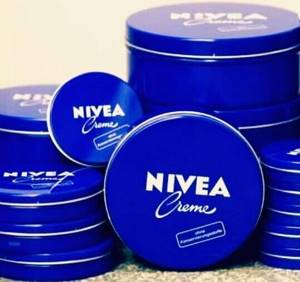
You can use fatty cream and vegetable oil, taken in equal quantities. Squeeze the cream from the tube into a jar and gradually mix it with vegetable oil.
Then apply the cream to the skin, wait 2-3 minutes (3-5 minutes for dry skin) and remove it with a cotton swab or napkin, previously slightly moistened with tea or lotion. After this, a face cream, nourishing or oily, is applied to the still damp face.
Features of using home remedies
Since the composition of a homemade product is noticeably different from a store-bought one, it is necessary to remember some features of its use. For example, you should always apply the product only to pre-moistened skin, otherwise you can not only stretch it, but also injure it with large particles. Also remember, contrast douches will help enhance metabolic processes in the skin and increase the effectiveness of home remedies. And a few more rules:
- When using abrasive ingredients such as oatmeal and bran, you should not apply the product to the delicate skin around the eyes - this is fraught with microtrauma and the further appearance of a fine network of wrinkles.
- Mustard powder should not be applied to the delicate skin of the eyelids - this can cause irritation and swelling. Those with hypersensitive skin are not recommended to use mustard powder at all in order to prevent allergic reactions.
- Those with dry and sensitive skin should not use salt in cleansers, as it can cause discomfort and cause redness of the skin.
Due to its high cleansing properties, for best results it is better to use a homemade product once a day - this way you will not dry out the skin. Even combination and oily skin, with regular use of a homemade cleanser, becomes more matte, and the amount of sebum on its surface is significantly reduced.


